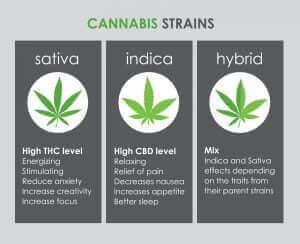Effectiveness of THC Transdermal Patches
THC transdermal patches have emerged as a game-changing method for cannabis consumption, offering a discreet, controlled, and long-lasting alternative to smoking, vaping, or edibles. These patches deliver tetrahydrocannabinol (THC)—the psychoactive compound in cannabis—directly into the bloodstream through the skin, promising targeted and systemic relief. But how effective are they? Let’s dive into the science, benefits, and potential drawbacks of THC transdermal patches to see if they deliver on their promise.
What Are THC Transdermal Patches?
THC transdermal patches are adhesive products infused with a measured dose of THC. When applied to the skin, they use transdermal delivery technology to release the compound gradually into the bloodstream. Unlike topical creams, which work on the skin’s surface, transdermal patches penetrate deeper to deliver systemic effects.
Key Features of THC Transdermal Patches:
- Extended Release: Typically provide relief for 8–12 hours or longer.
- Precise Dosing: Deliver a consistent amount of THC over time.
- Discreet Use: Odorless and easy to wear under clothing.
- Avoids First-Pass Metabolism: THC bypasses the digestive system, enhancing bioavailability and reducing delayed onset.
How Do THC Transdermal Patches Work?
The patch adheres to a venous area of the skin, such as the wrist, ankle, or upper arm. Once applied, the following process occurs:
- Activation: THC is released from the patch and absorbed through the skin.
- Penetration: THC passes through the skin barrier and enters the bloodstream.
- Effect: THC interacts with the endocannabinoid system (ECS) to produce its effects, such as pain relief, relaxation, or appetite stimulation.
The gradual release ensures steady effects without the intense spikes associated with smoking or edibles.
Benefits of THC Transdermal Patches
1. Consistent and Long-Lasting Effects
Patches offer a steady release of THC, preventing the rollercoaster of highs and lows seen with other methods like edibles or inhalation. This makes them ideal for conditions requiring prolonged relief, such as chronic pain or insomnia.
2. Precise Dosage
Each patch contains a pre-measured amount of THC, ensuring accurate dosing and eliminating the guesswork often associated with other consumption methods.
3. Discreet and Convenient
Patches are odorless, small, and easy to apply, making them a perfect choice for users seeking privacy. They can be worn under clothing without drawing attention.
4. No Inhalation Required
For individuals with respiratory conditions or those avoiding smoke or vapor, patches provide a lung-friendly alternative.
5. Targeted and Systemic Relief
Some patches are formulated for localized pain relief, while others provide full-body effects by delivering THC directly into the bloodstream.
What Are THC Transdermal Patches Used For?
Pain Management
THC’s analgesic properties make patches effective for chronic pain conditions like arthritis, neuropathy, or fibromyalgia. The steady release ensures consistent relief without frequent reapplication.
Anxiety and Stress
For individuals managing anxiety, THC patches offer a low, consistent dose that can help maintain calm without overwhelming psychoactive effects.
Sleep Support
THC’s sedative effects can assist with insomnia by providing prolonged nighttime relief, ensuring users stay asleep throughout the night.
Nausea and Appetite Stimulation
THC patches can help reduce nausea and boost appetite, particularly for cancer patients undergoing chemotherapy or those with conditions like Crohn’s disease.
Are THC Transdermal Patches Effective?
Research and user experiences indicate that THC patches can be highly effective for certain applications, though their effectiveness depends on individual factors like skin type, placement, and dosage. For many, the benefits of steady, long-lasting relief outweigh the slower onset of effects.
Potential Limitations of THC Transdermal Patches
1. Slow Onset
Patches typically take 30 minutes to 2 hours to deliver noticeable effects, making them less suitable for immediate relief.
2. Absorption Variability
The effectiveness of transdermal delivery depends on the user’s skin type, hydration level, and the patch’s placement. Areas with thin skin and good blood flow, like wrists, work best.
3. Limited Bioavailability
Although patches bypass digestion, only a portion of the THC penetrates the skin and enters the bloodstream, potentially reducing its potency.
4. Not Ideal for High Doses
Patches are generally designed for low to moderate THC doses, making them less suitable for individuals requiring large amounts of THC for severe symptoms.
5. Cost
Transdermal patches are often more expensive than other methods, which can be a barrier for regular users.
How to Maximize the Effectiveness of THC Transdermal Patches
- Choose the Right Patch: Look for products tailored to your specific needs, such as pain relief, anxiety management, or sleep support.
- Apply to the Right Spot: Place the patch on a venous area of the skin (wrist, ankle, or arm) for optimal absorption.
- Prepare Your Skin: Clean and dry the application area to improve adhesion and absorption.
- Start Low and Go Slow: If you’re new to THC, start with a low-dose patch to gauge your tolerance.
- Monitor Usage: Keep track of how long the patch lasts and how your body responds to find the ideal product and dosage for you.
THC Patches vs. Other Consumption Methods
Patches vs. Smoking/Vaping
- Advantages: Long-lasting, discreet, no lung irritation.
- Disadvantages: Slower onset, less suited for rapid symptom relief.
Patches vs. Edibles
- Advantages: Avoids digestion, consistent dosage, longer duration.
- Disadvantages: Lower bioavailability, slower onset.
Patches vs. Topicals
- Advantages: Provides systemic relief; not limited to localized effects.
- Disadvantages: More expensive than topicals designed for surface-level pain relief.
Who Should Consider Using THC Transdermal Patches?
THC patches are ideal for:
- People with chronic pain seeking consistent relief.
- Individuals with respiratory issues who want to avoid inhalation.
- Those needing discreet, odor-free consumption methods.
- Patients managing conditions like anxiety, nausea, or insomnia who prefer low-maintenance, extended relief.
Final Thoughts: Are THC Patches Worth It?
THC transdermal patches provide a unique and effective way to experience the benefits of cannabis, especially for those who need long-lasting, consistent relief. While they may not deliver the immediate effects of smoking or vaping, their discreet nature, precise dosing, and extended release make them a valuable tool for managing chronic conditions like pain, anxiety, and insomnia. As with any cannabis product, it’s essential to choose high-quality patches from reputable brands and consult a healthcare professional before starting a new regimen.
For individuals seeking a controlled, smoke-free way to enjoy the therapeutic effects of THC, transdermal patches are a modern solution that lives up to its promise.



